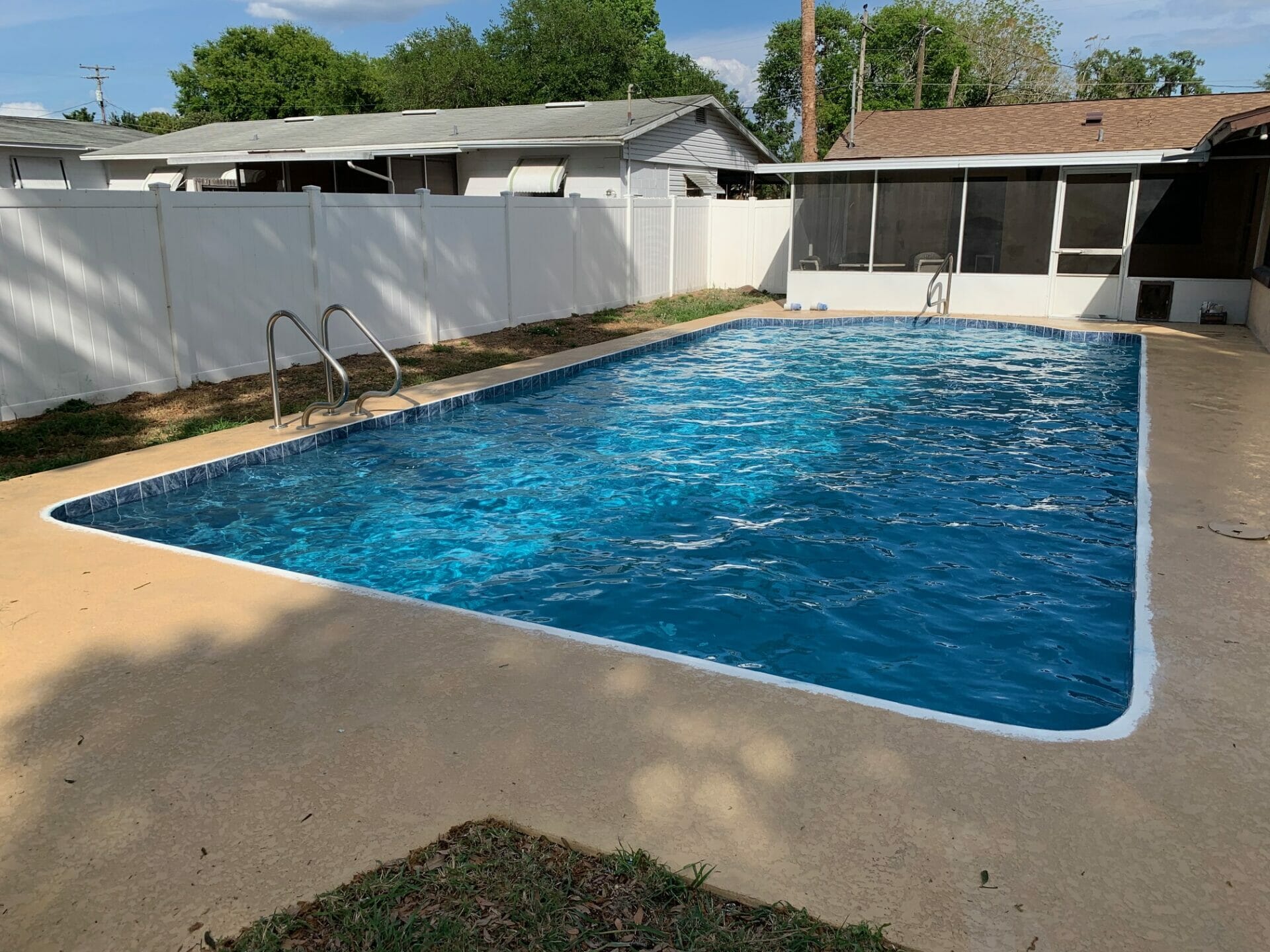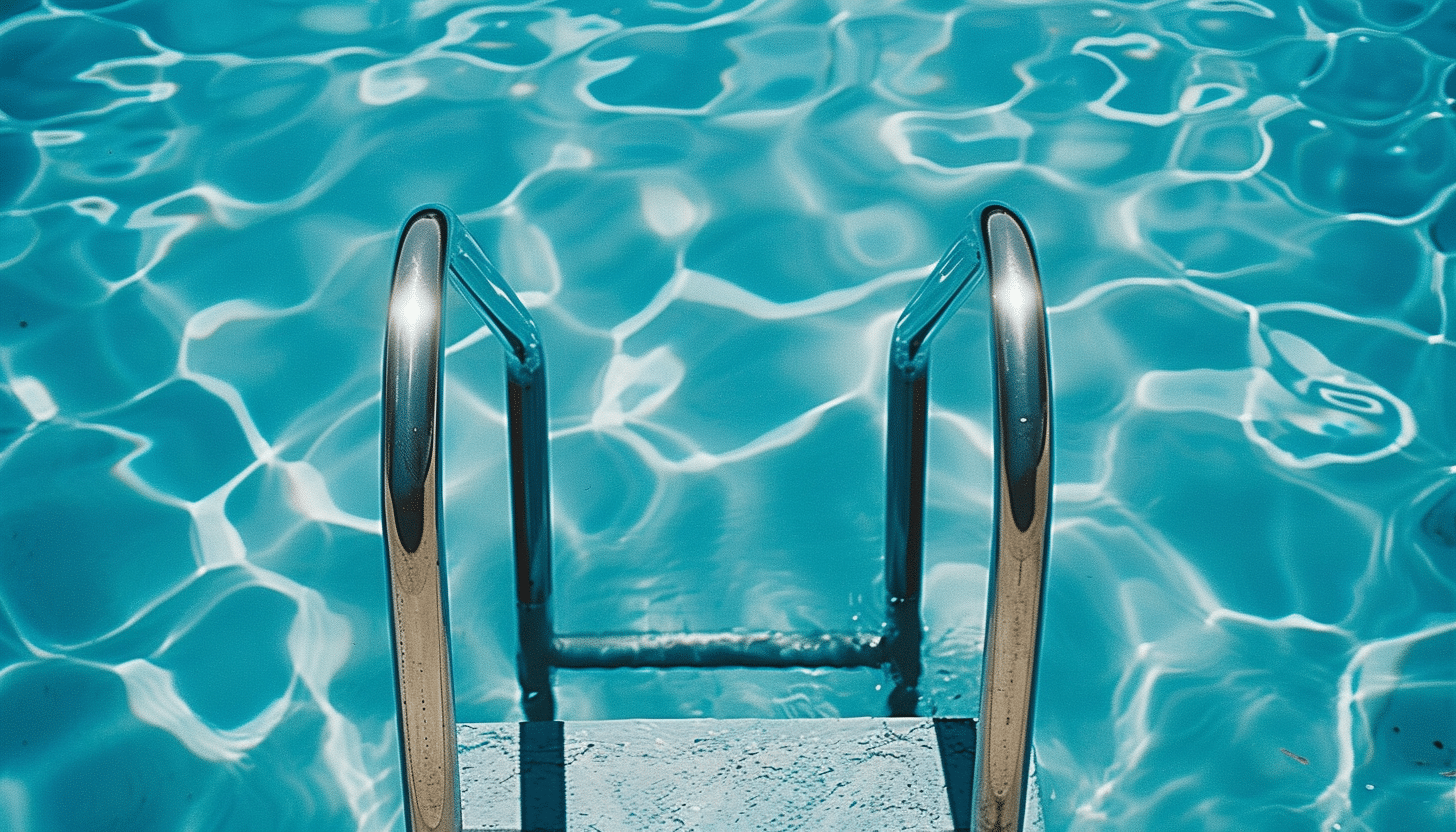We understand the frustration of dealing with in-ground pool leaks, even on a sunny day by the pool. But worry not; we’re here to help you detect and fix them so you can get back to enjoying your pool time. Leaks often hide in unexpected places like underground piping or pool equipment, making detection challenging. However, with careful inspection of key areas such as the pump, filter, heater, chlorinator, and O-rings, we can uncover and address these issues, ensuring your pool stays perfect for your peace of mind.

Key Takeaways
- In-ground pool leaks can crop up irrespective of regular pool maintenance
- Leak detection involves full-scale pool troubleshooting and problem-solving
- Leaks can potentially reside in any pool part, including the pump, filter, heater, chlorinator, or O-rings
- Prompt pool repair can save you from expensive water bills and potential pool damage
- A comprehensive understanding of pool diagnostics will greatly aid in leak detection and fixing
- Never underestimate the complexity of detecting leaks in in-ground pools
Detecting the Signs of a Pool Leak
We emphasize the importance of early leak detection for proper pool maintenance. Watch for signs like high water bills, damp spots, or excessive grass growth near the pool that indicate potential leaks. Our Bucket Test can confirm water loss, which is crucial for maintaining chemical balance and preventing algae. Equipment performance changes, such as pump priming issues, may also signal leaks. Prioritize safety during an inspection and seek professional help if needed to ensure your pool remains a safe and enjoyable space.
Diagnosing In-Ground Pool Leaks: Practical Steps
Inadequate pool care often leads to various pool issues. One common problem is in-ground pool leaks, which require immediate attention to prevent further pool deterioration and unnecessary costs. Fortunately, you can run diagnostics on your in-ground pool with basic knowledge of pool maintenance and common troubleshooting techniques. We’ve outlined some practical steps below, employing a bucket test and dye test strategy, along with a detailed pool inspection, to help you successfully spot any leaking issues.
Performing the Bucket Test
This popular method helps discern if the water loss is due to evaporation or a genuine leak. To conduct this test, all you need is a five-gallon bucket:
- Fill a 5-gallon bucket with pool water and place it on a pool step.
- Turn off all pool equipment and mark the water level in both the pool and the bucket.
- After 24 hours, observe and compare both levels. If the pool’s level has dropped more than the bucket’s level, this indicates a leak.
Repeat the bucket test while running the equipment to check for equipment or plumbing leaks. If the pool loses more water while the equipment is running, this suggests a potential issue with your equipment or plumbing.
Using Leak Detection Dye
If diagnosing in-ground pool leaks doesn’t help locate them, a leak detection dye can be of assistance. This dye aids in identifying the exact location of the leak in your pool:
- Ensure that the pool equipment is off, reducing water movement.
- Apply leak detection dye near the suspected area.
- Watch the dye’s movement. If the dye is drawn into a particular area, this implies a leak. The dye can flow towards the leak either on the pool bottom or pool walls, which need immediate marking for repair.
Examining Pool Equipment and Plumbing
We recommend starting with a thorough check of all pool equipment, especially on the equipment pad, both while the pump is running and when it’s off. For a closer inspection, don goggles or a snorkel to examine the pool’s interior surfaces for any signs of cracks or irregularities. Leaks can stem from various components like the skimmer, filtration system, or light housing, so conducting dye tests near these areas can help pinpoint the source. In-ground pool leaks are tricky to diagnose and may require professional assistance, including pressure testing and advanced detection methods. Remember, regular pool maintenance and timely leak repairs are essential for hassle-free pool care.
Conclusion
Finding and fixing leaks in your pool is key to keeping it in good shape, saving you both time and money on water bills and big repairs. Using methods like the Bucket Test or Dye Test early on helps manage leaks effectively. If these techniques don’t work or the repair seems too complicated, getting help from a professional is a smart choice. Pool experts have the skills and tools needed for a thorough fix, giving you a durable and enjoyable pool without the worry of leaks or damage. Always watch for leak signs and fix them quickly to maintain your pool’s fun and leak-free use.
FAQs
How can I detect and locate leaks in my in-ground pool?
Diagnosing in-ground pool leaks often involves multiple strategies. Start by observing for any abnormal wet areas around your pool, increased water consumption, or unusual behavior of your pool equipment. Conduct a ‘Bucket Test’ to identify if water loss extends beyond normal evaporation. You can also use leak detection dye near the suspected areas to visualize any leaks. Further inspection of the pool equipment, skimmers, or light housings might be necessary. If the leak remains undetected, it would be wise to hire a professional pool technician for a comprehensive pool inspection and diagnostic.
What are the signs of a pool leak?
Common signs of a pool leak include wet areas around the pool that appear even without a splash, sudden increase in water bills, chemical imbalances leading to frequent algae blooms, and changes in surrounding ground or tiles. More subtle signs may include water level variations during the pump operation. Diagnosing in-ground pool processes can help you identify these pool problems quickly.
How do I perform the Bucket Test?
Place a 5-gallon plastic bucket on a pool step and fill it to match the pool’s water level. Mark both water levels with a marker or tape. Ensure that all pool equipment is off and leave the bucket for 24 hours. Compare the two water levels after the 24-hour period. A greater drop in the pool’s water level than in the bucket indicates a leak.
How do I use leak detection dye?
Before diagnosing in-ground pool leak detection dye, ensure there is no water movement in the pool. Apply the dye near suspected leak areas. If there’s a leak, the dye will be drawn towards it, indicating the compromised structure. The dye seamlessly flows to the exact spot of the leak, which should be marked for future repair.
When should I consider professional help for a pool leak?
If diagnosing in-ground pool leaks efforts don’t yield definitive results, or if the necessary repairs exceed your comfort or expertise, it may be time to call in a professional pool technician. They possess advanced tools and experience that offer not only effective pool troubleshooting but also peace of mind about the structural integrity of your pool.




